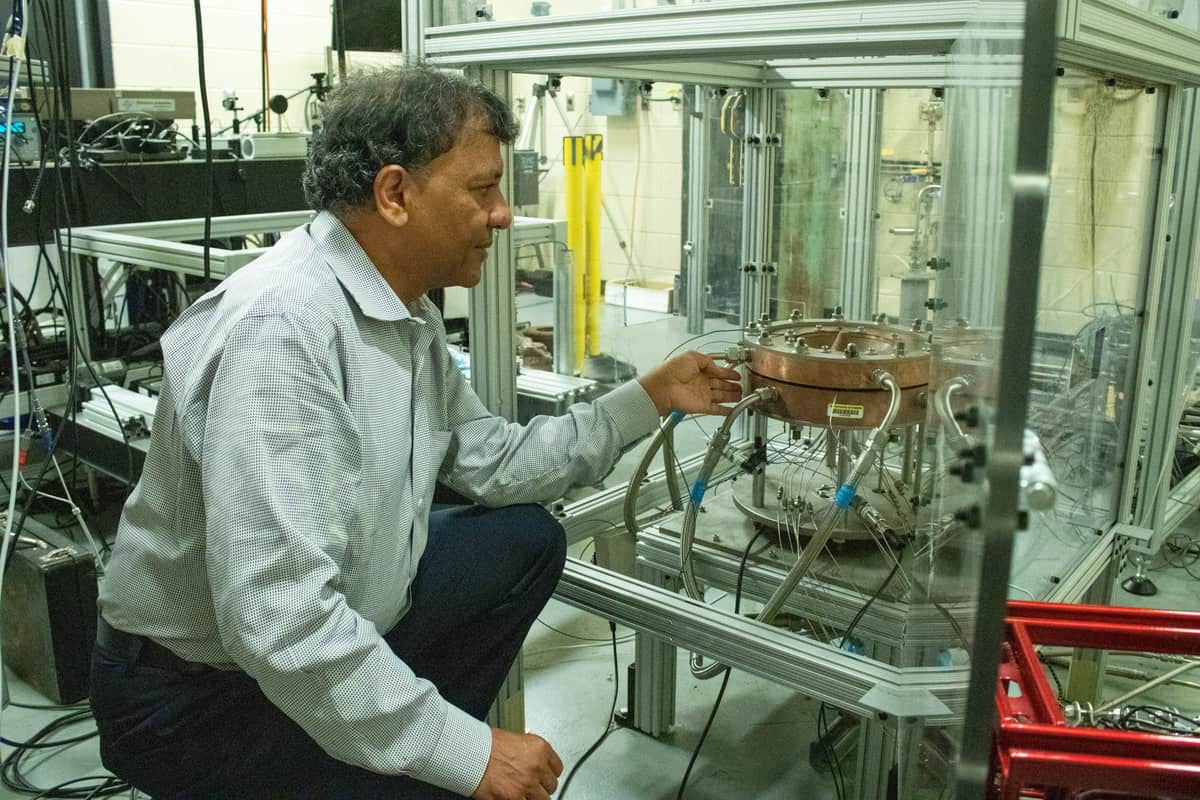Ajay Agrawal, a mechanical engineering professor at The University of Alabama, is pushing the boundary of engine technology with his rotating detonation combustion research.
Since 2018, Agrawal has been exploring a different type of combustion, focusing on three goals: improved efficiency, reduced emissions and more flexible fuels.
Normal combustion, such as a burning candle or a diesel engine, burns slower than the speed of sound. Detonation is a type of combustion in which the flame moves at supersonic speeds.
Rotating detonation engines harness this type of combustion using circular chambers where the burning fuel continuously revolves around the engine.
“When you hear ‘detonation,’ you don’t like it, because it’s destructive,” Agrawal said about his field of study. “Nobody has used [rotating] detonation effectively so far because it’s destructive.”
In his lab, Agrawal has two rotating detonation engines, each with a different application. One is a project with NASA for rocket engines, and the other is a project with the Department of Energy for power generation.
This makes the University of Alabama the only university with two different types of rotating detonation engines on campus, Agrawal said. These prototypes are small, but they generate massive amounts of power and heat.
Dalton Langner, a doctoral student working with Agrawal, said the engines are about 8 inches in diameter but that they can create the same heat output as 10 semitruck engines.
The maximum output for the current prototypes is 10 megawatts, roughly equivalent to the power output of five diesel locomotives. However, that power output is difficult to sustain without destroying the engine.
“Just half a second is the whole test duration,” Apurav Gupta, another doctoral student in Agrawal’s lab, said. “It just melts the metal.”
Despite the challenges that rotating detonation engines present, the possible benefits are promising.
Rockets with rotating detonation engines would produce more thrust using smaller engines. This is ideal for deep space missions on small to midsize rockets and could be used on missions to Mars, Agrawal said.
Rotating detonation engines have the potential to be used in power plants as well. Agrawal said they generate immense amounts of power more efficiently than traditional types of combustion and can be run using environmentally friendly fuels like hydrogen.
Although rotating detonation combustion offers these benefits, it is not as clean as renewable electrical engines.
“There is no electrical option to launch rockets,” Agrawal said. “High-speed missiles need to be fuel-based. Or even for power generation in power plants, most of it is fuel-based right now, although we can transition to other options gradually.”
Technologies like fusion energy are likely the long-term solution, but those options are still many years away. According to Agrawal, rotating detonation engines could arrive in as little as five to 10 years.
Agrawal said the research he and his team have done at the University is not only scientifically beneficial, but also socially beneficial. He said the research process teaches students how to be leaders and innovators.
“We push the limit of technology, but at the same time, in doing so, we are creating people … who are going to decide what this country needs to do next or where to lead the world,” Agrawal said.







